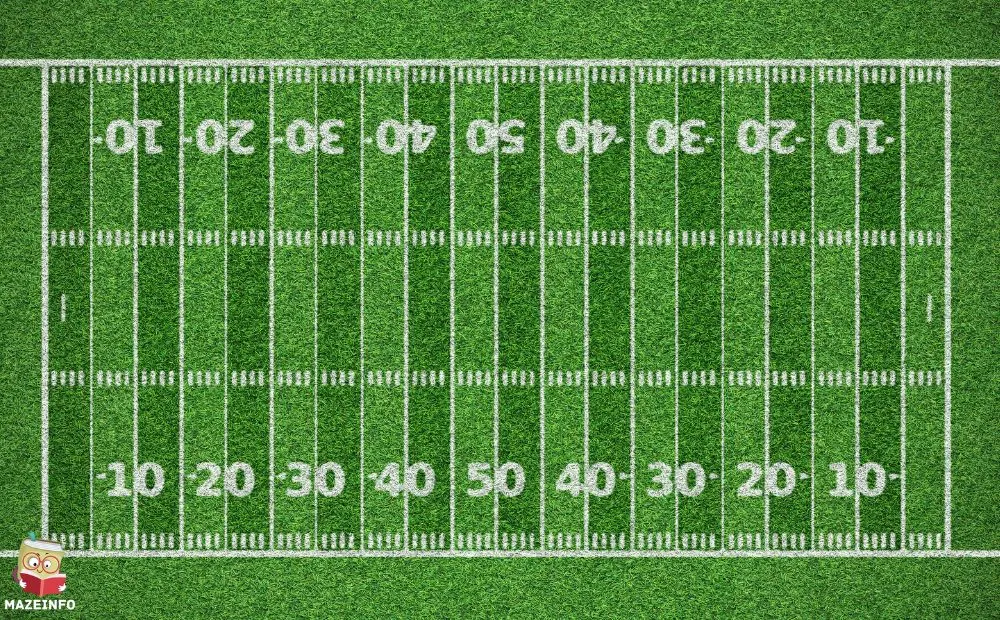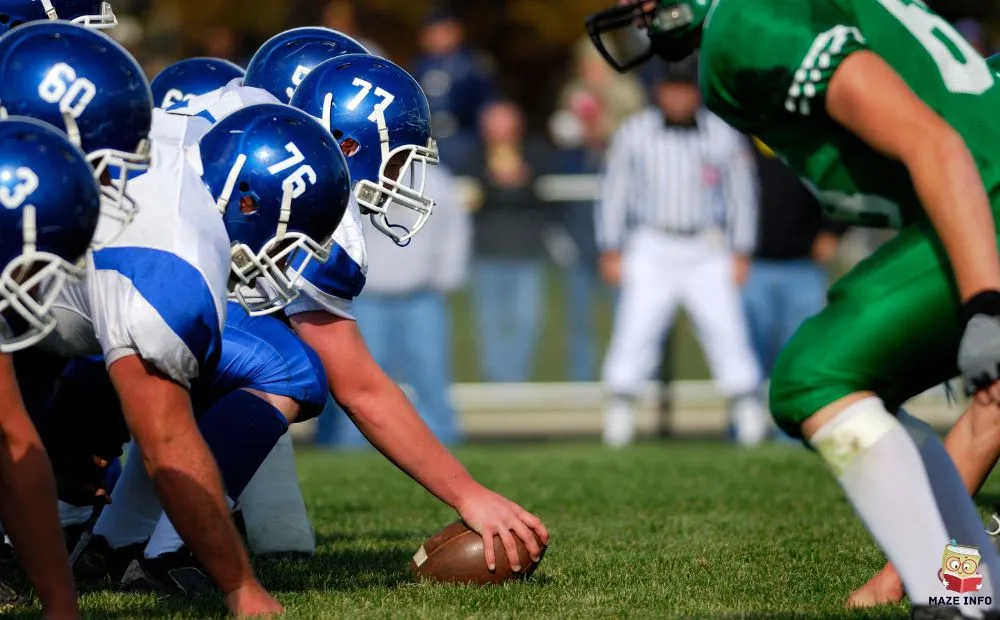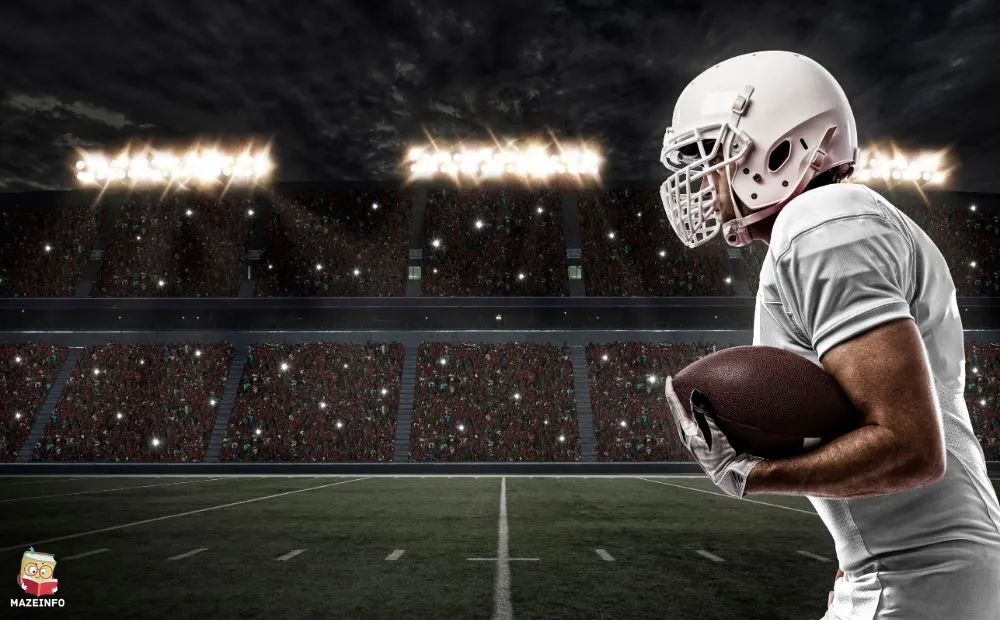In the exhilarating world of American football games, where every play holds the promise of victory or defeat, the question often arises: “How many quarters are in a football game?” This seemingly simple inquiry unveils the intricacies of a sport that captivates millions with its blend of strategy, athleticism, and sheer excitement. Join me as we delve into the quarters, halves, and time-outs that shape the dynamic rhythm of football games.
Quarters in a Football Game

A football game consists of four quarters, each lasting 15 minutes in professional and college football games, though in high school sports football, the quarters can be shorter. The game begins with a coin toss to determine which team kicks off and which team receives the ball.
The first quarter often sets the tone for the game as teams strategize and gauge each other’s strengths and weaknesses. As the game progresses, halftime provides a crucial break for teams to regroup, make adjustments, and rest. The third quarter typically sees increased intensity as teams strive to gain momentum and control. In the fourth quarter, especially in close games, tension escalates as teams push for a decisive victory or a comeback win. Overtime periods are played if the score is tied at the end of regulation, adding even more drama and excitement to the game.
Duration of a Football Game
The duration of a football game, particularly in the context of professional or collegiate American football, typically lasts for about three to four hours. However, this timeframe can vary depending on various factors such as timeouts, commercial breaks, halftime, and game stoppages for penalties, injuries, or reviews by officials.
Here’s a breakdown of the typical components and durations within a football game:
Four Quarters: A football game consists of four quarters, each lasting 15 minutes of actual playing time. However, due to stoppages, timeouts, and breaks, the actual time can extend well beyond this.
Halftime: At halftime, there is a break typically lasting around 12 to 15 minutes. This gives players and coaches time to rest, strategize, and make adjustments.
Commercial Breaks: Television broadcasts of football games today include commercial breaks, which can add several minutes to the overall duration of the game. These breaks occur at various points during the game, such as after touchdowns, at the end of quarters, or during timeouts.
Timeouts: Each team has a certain number of timeouts they can use during a game. These timeouts stop the clock and allow teams to regroup, discuss strategies, or rest players. Each timeout typically lasts around 30 seconds to a minute.
Play Clock: Between plays, there is a play clock that determines how much time teams have to snap the ball. This adds to the overall time taken during the game.
Overtime: If the game is tied at the end of regulation time, overtime periods can extend the duration of the game significantly. In professional football, overtime periods are typically 10 minutes each, while in college football games, they can vary.
Delays: Sometimes, games experience delays due to weather conditions, technical issues, or other unforeseen circumstances. These delays can add additional time to the overall duration of the game.
Breakdown of Quarters

In American football games, the game is divided into four quarters. Each quarter is 15 minutes long, although the actual time of a game can be longer due to stoppages, timeouts, and halftime. Here’s a breakdown of what typically happens in each quarter:
First Quarter: This is often a period of feeling out the opponent. Teams might use this time to establish their strategies, test the defense, and get a sense of the flow of the game. Scoring can happen in the first quarter, but it’s often less frequent compared to later football quarters.
Second Quarter: Teams usually start to get into their rhythm by the second quarter. Offenses may become more aggressive, trying to put points on the board before halftime. This quarter often sees more scoring as teams adjust to each other’s tactics.
Halftime: At halftime, there’s a break of about 12-15 minutes. Teams go to their locker rooms to discuss strategy, make adjustments, and rest. Halftime is also when entertainment events like performances or interviews often occur.
Third Quarter: Coming out of halftime, teams apply the adjustments discussed during the break. This quarter can be pivotal in terms of momentum shifts. A team that was trailing might make a comeback, or a leading team might extend its advantage.
Fourth Quarter: This is typically the most intense quarter, especially in close games. Teams often take more risks, going for it on fourth downs, attempting more challenging plays, and using timeouts strategically. The fourth quarter can decide the outcome of the game, and it’s not uncommon for games to be won or lost in the final minutes.
Importance of Quarters in Scoring
In football, the concept of quarters football play a crucial role in determining scoring opportunities and managing gameplay. Here are several key points highlighting the importance of quarters in scoring:
Game Structure: Football games today are typically divided into four quarters, each lasting 15 minutes (in professional football, college football, and high school football). This division helps in organizing the game and provides strategic breaks for teams to regroup and plan their strategies.
Scoring Opportunities: Quarters create multiple opportunities for teams to score points. Each quarter offers a fresh start and allows teams to reassess their tactics based on the current game situation. This structure adds to the excitement of the game as teams strive to capitalize on scoring chances within each quarter.
Momentum Shifts: Quarters can be pivotal in determining momentum shifts within a game. A team may dominate one quarter, scoring multiple points and gaining momentum, only to face a turnaround in the next quarter as the opposing team adjusts its strategy. These momentum shifts add drama and unpredictability to football games.
Strategic Breaks: Quarter breaks serve as strategic pauses where teams can analyze their performance, make necessary adjustments, and discuss tactics with coaches. These breaks are crucial for teams to stay organized, address weaknesses, and capitalize on strengths, ultimately influencing scoring opportunities in subsequent quarters.
Clock Management: The timing of quarters influences clock management strategies. Teams may adjust their gameplay based on the remaining time in a quarter, especially towards the end of halves where clock management becomes critical in maximizing scoring chances or preventing the opponent from scoring.
End-of-Quarter Scenarios: The end of each quarter often sees teams intensifying their efforts to score, particularly when the game is close. This leads to exciting plays and strategic decisions as teams aim to capitalize on the limited time remaining in the quarter.
Strategy and Adjustments between Quarters

In football, the strategy and adjustments made between quarters play a crucial role in determining the outcome of the game. Coaches and players need to adapt quickly to changing situations, exploit weaknesses, and capitalize on strengths. Here are some key aspects to consider:
Tactical Adjustments: Coaches often tweak their game plans based on how the opposing team is performing. This could involve changing formations, adjusting defensive schemes, or altering offensive strategies to create more scoring opportunities.
Player Rotation: Managing player fatigue is essential, especially in high-intensity games. Coaches may rotate players to keep them fresh and maximize performance throughout the game. Substitutions can also inject new energy and tactical options into the team.
Injury Management: Injuries can occur at any time during a game. Teams must have backup plans in place and make quick decisions on how to replace injured players without compromising team cohesion or strategy.
Mental Preparation: Maintaining focus and mental resilience between football quarters is crucial. Coaches work on keeping players motivated, focused, and mentally sharp to make smart decisions under pressure.
Analyzing Opponent’s Strategies: Coaches and analysts analyze the opponent’s tactics during breaks to identify patterns, weaknesses, and opportunities. This information helps in making informed adjustments for the next quarter.
Reviewing Performance: Players and coaches review their performance during breaks to identify areas of improvement. This could involve analyzing individual performances, team dynamics, and execution of strategic plans.
Time Management: Managing the clock effectively is vital, especially in close games. Teams may adjust their pace of play, use timeouts strategically, or employ clock management tactics to control the flow of the game.
Adaptability: The ability to adapt quickly to changing game situations is a hallmark of successful teams. Coaches and players must be flexible and ready to make on-the-fly adjustments based on real-time developments on the field.
Also Read More: Exploring The Thrills Of Roller Hockey And Its Growing Popularity
Halftime Break and Analysis

The halftime break in football is more than just a pause in the game; it’s a strategic interlude that coaches and players utilize to reassess their tactics, make necessary adjustments, and motivate the team for the second half. This brief period often proves to be decisive in determining the outcome of the match.
Tactical Analysis
During halftime, coaches delve into tactical analysis based on the performance of both their team and the opposition. They review statistics such as possession percentages, passing accuracy, and shots on goal to identify areas of strength and weakness. This analysis helps them formulate a plan to exploit vulnerabilities and capitalize on strengths in the upcoming half.
Player Feedback and Motivation
Additionally, halftime provides an opportunity for coaches to provide feedback to individual players and the team as a whole. They offer constructive criticism, highlight positive aspects, and emphasize strategic changes to enhance performance. Moreover, halftime speeches are crucial for boosting morale, instilling confidence, and igniting the competitive spirit needed to push through challenges.
Physical Recovery and Hydration
Apart from tactical and motivational aspects, halftime is vital for players’ physical recovery and hydration. Football is a demanding sport that requires immense stamina and endurance. The break allows players to rehydrate, refuel with snacks or energy drinks, receive medical attention if needed, and regroup for the intense physical exertion ahead.
Strategic Substitutions
Halftime often sees strategic substitutions made by coaches to introduce fresh legs, tactical variations, or address injuries or fatigue. These substitutions can significantly impact the dynamics of the game, injecting new energy or altering the team’s approach to overcome the opposition
Conclusion
The four quarters in a football game serve as the framework for an intense and strategic battle between teams. Each quarter, with its 15-minute duration, allows for dynamic shifts in momentum and strategy, keeping fans on the edge of their seats. The conclusion of a football game is where the culmination of efforts, tactics, and skill truly shines, often leading to thrilling moments and unforgettable finishes.
Whether a team is securing a victory or mounting a comeback, the final quarter encapsulates the essence of competition and showcases the resilience and determination of athletes. Football games are not just about the plays on the field but also about the emotions and excitement that build up to the climactic moments in the closing stages of the game.
Frequently Asked Questions (FAQ)
Q: What is the two-minute warning in football?
Ans: The two-minute warning is a stoppage in play that occurs when there are two minutes remaining in each half of a football game. It allows teams to strategize and make adjustments before the end of the half or game.
Q: Are there breaks between quarters?
Ans: Yes, there are breaks between each quarter. At the end of the first and third quarters, there is a 2-minute break. At halftime, there is a longer break typically lasting around 12-15 minutes.
Q: What happens if the game is tied at the end of the fourth quarter?
Ans: In regular-season NFL games, if the score is tied at the end of the fourth quarter, the game goes into overtime. Overtime rules vary but often involve each team having a chance to possess the ball and score.
Q: How many timeouts does each team get per half?
Ans: In the NFL, each team receives three timeouts per half. Unused timeouts do not carry over to the second half.
Q: Can a team score in every quarter?
Ans: Yes, a team can score in every quarter of a football game. This can happen through touchdowns, field goals, or safeties.



